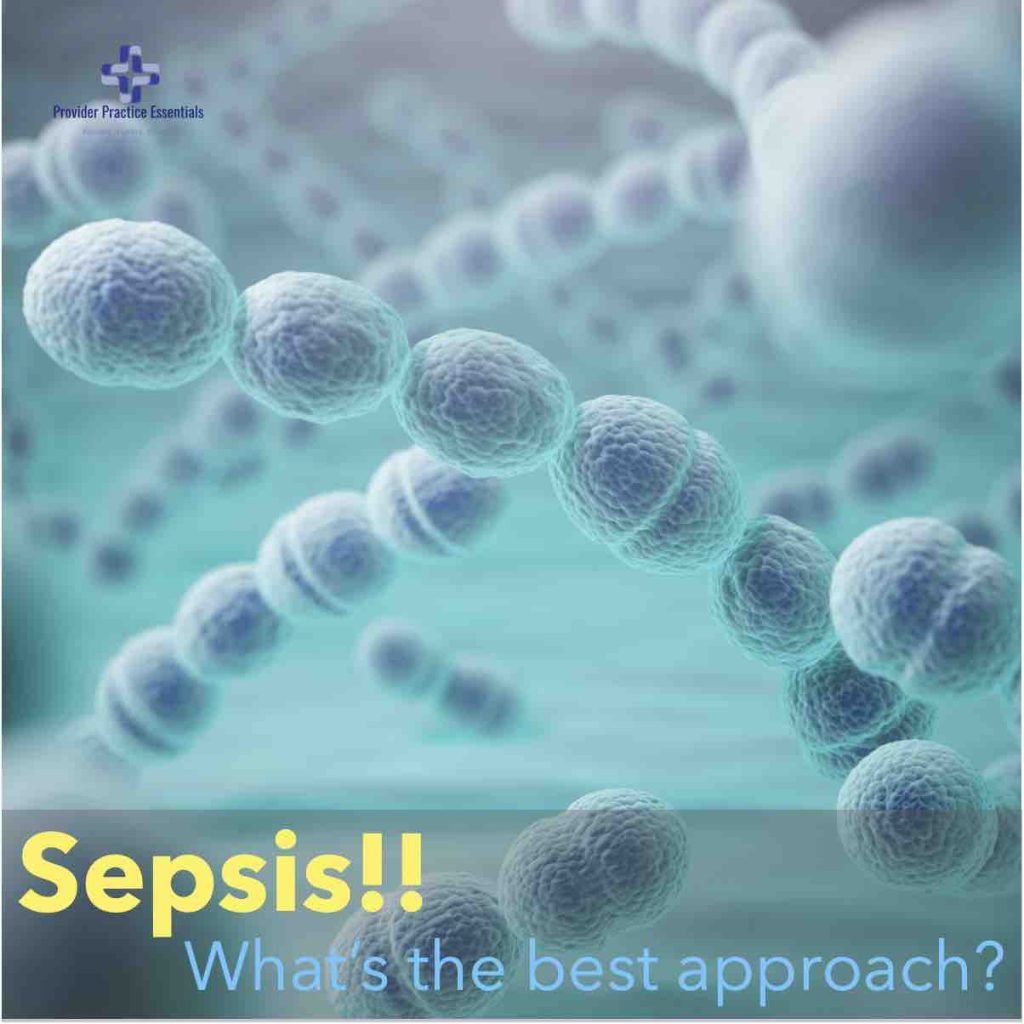Rob Beatty, MD FACEP
Sepsis is a serious and potentially life-threatening condition that is unfortunately all too common in hospitals. Healthcare providers must recognize the signs and symptoms of sepsis early and initiate prompt treatment to improve patient outcomes. But what is the best therapy for sepsis? Is it the CLOVERS treatment, or is it something else entirely?
The CLOVERS trial
Let’s start with the CLOVERS trial, which investigated the use of vitamin C, thiamine, and hydrocortisone in sepsis management. The trial did not find a significant improvement in outcomes compared to usual therapy, which could include vasopressors, fluids, and antibiotics. Some healthcare providers may still consider the use of these agents in specific patient populations, but the evidence is not clear-cut.
Management Options for Sepsis
So what is the best therapy for sepsis? The answer is not straightforward and depends on several factors, including the patient’s condition, the likely source of infection, and local antibiotic resistance patterns. However, there are some key components of sepsis management that healthcare providers should consider.
First, early recognition and diagnosis are critical for prompt treatment. Healthcare providers should be aware of the signs and symptoms of sepsis, such as fever, low blood pressure, rapid heart rate, and altered mental status. They should initiate a sepsis workup promptly and consider starting empiric antibiotic therapy while awaiting the results of blood cultures.
Once the likely source of infection is identified, source control should be initiated as soon as possible. This may involve draining abscesses, removing infected tissues, or starting appropriate antibiotic therapy. The choice of antibiotic therapy should be based on the likely source of infection and local antibiotic resistance patterns. Early administration of appropriate antibiotics has been shown to improve survival in patients with sepsis.

Fluid Resuscitation and Blood Pressure
Fluid resuscitation is another important component of sepsis management. Patients with sepsis often have low blood pressure and inadequate blood flow to vital organs. Early and aggressive fluid resuscitation with intravenous fluids can help restore blood pressure and improve organ perfusion.
In some cases, fluid resuscitation may not be enough to restore blood pressure. Vasopressor medications, such as norepinephrine, can be used to increase blood pressure and improve organ perfusion. Healthcare providers should consider starting vasopressor therapy early in patients with septic shock or hypotension despite fluid resuscitation.
Corticosteroids for Sepsis?
Corticosteroids can also be considered in patients with septic shock who are unresponsive to fluid resuscitation and vasopressor therapy. However, the evidence for corticosteroids in sepsis management is mixed, and their use should be guided by individual patient factors.
With Sepsis, What’s Old is New Again
So, what is the optimal management of sepsis? It involves a multidisciplinary approach, early recognition and diagnosis, source control, appropriate antibiotic therapy, aggressive fluid resuscitation, vasopressors if necessary, and consideration of corticosteroids and other adjunctive therapies.
However, the optimal management of sepsis is easier said than done. The reality is that sepsis management is often complicated by delays in recognition and diagnosis, inadequate source control, and inappropriate antibiotic therapy. The healthcare system is also plagued by a lack of standardized sepsis protocols, which can lead to variation in care and poorer outcomes for patients.
Furthermore, sepsis management is not immune to the all-too-familiar problem of healthcare providers relying on “clinical gestalt” rather than evidence-based practice. Clinical gestalt is the idea that experienced clinicians can make accurate diagnoses and treatment decisions based on intuition and experience. While there is some truth to this, relying solely on clinical gestalt can lead to missed diagnoses and inappropriate treatment decisions.
In fact, a study published in the New England Journal of Medicine in 2017 found that early goal-directed therapy, which involves using clinical parameters to guide fluid resuscitation and other interventions, was not superior to usual care in improving outcomes in patients with septic shock.
Summary
In summary, the optimal management of sepsis involves a multidisciplinary approach, early recognition and diagnosis, source control, appropriate antibiotic therapy, aggressive fluid resuscitation, and consideration of adjunctive therapies such as vasopressors and corticosteroids. However, achieving optimal sepsis management is often complicated by delays in recognition and diagnosis, inadequate source control, inappropriate antibiotic therapy, and a lack of standardized protocols.
The CLOVERS trial investigated the use of vitamin C, thiamine, and hydrocortisone in sepsis management, but the evidence is not clear-cut for their use in all patient populations. Healthcare providers must continue to stay up-to-date on the latest evidence-based practices for sepsis management and resist the urge to rely solely on clinical gestalt. With prompt recognition and treatment, sepsis outcomes can be improved and lives can be saved.
References
- Marik, P. E., Khangoora, V., & Rivera, R. (2017). Vitamin C, Hydrocortisone, and Thiamine for the Treatment of Severe Sepsis and Septic Shock: A Retrospective Before-After Study. Chest, 151(6), 1229-1238. doi: 10.1016/j.chest.2016.11.036
- Rhodes, A., Evans, L. E., Alhazzani, W., Levy, M. M., Antonelli, M., Ferrer, R., Dellinger, R. P. (2017). Surviving Sepsis Campaign: International Guidelines for Management of Sepsis and Septic Shock: 2016. Critical Care Medicine, 45(3), 486-552. doi: 10.1097/ccm.0000000000002255
- Kumar, A., Roberts, D., Wood, K. E., Light, B., Parrillo, J. E., Sharma, S., Cheang, M. (2006). Duration of hypotension before initiation of effective antimicrobial therapy is the critical determinant of survival in human septic shock. Critical Care Medicine, 34(6), 1589-1596. doi: 10.1097/01.CCM.0000217961.75225.E9
- Dellinger, R. P., Levy, M. M., Rhodes, A., Annane, D., Gerlach, H., Opal, S. M., Vincent, J. L. (2013). Surviving Sepsis Campaign: International Guidelines for Management of Severe Sepsis and Septic Shock, 2012. Intensive Care Medicine, 39(2), 165-228. doi: 10.1007/s00134-012-2769-8
- Yealy, D. M., Kellum, J. A., Huang, D. T., Barnato, A. E., Weissfeld, L. A., Pike, F., Angus, D. C. (2014). A Randomized Trial of Protocol-Based Care for Early Septic Shock. New England Journal of Medicine, 370(18), 1683-1693. doi: 10.1056/nejmoa1401602
